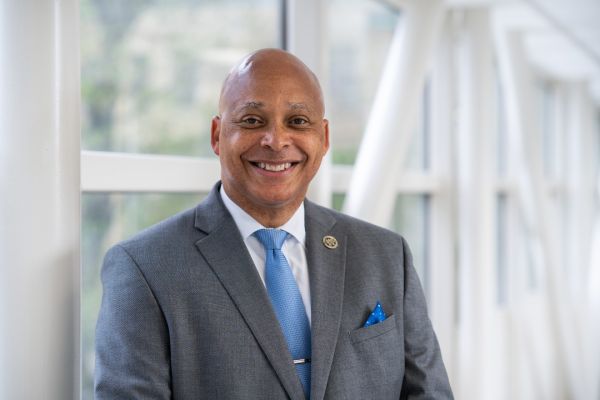There’s power in being your own advocate and there’s power in becoming an advocate for others after your own unlikely diagnosis with cancer.
One morning, more than 25 years ago, Jim Dorsey was riding a stationary bicycle while on a consulting job in Washington, DC from his home in Ontario. He noticed that he felt some pain while sitting down. When he woke up and saw blood the next morning, he called his doctor.
It took six months to make an appointment and get a diagnosis, but in October 1999, Jim learned he had an advanced, aggressive form of prostate cancer and was treated by a team of doctors in Toronto.
“I never thought about prostate cancer but I knew what it was instantly,” Jim says. “I lucked out all the way through. I responded perfectly to treatment and radiation went so smoothly, no hitches at all. Five years later, I was declared cancer-free.”
From the moment that the diagnosis was delivered, Jim and his late wife, Sandi, decided to dedicate their time to educating men about prostate cancer and the importance of early diagnosis. They advocated for early detection through the two-step process that involves both a blood test to look for elevated levels of prostate-specific antigen, a protein, and a digital rectal exam.
Jim now runs a support group for men in Brampton, Ontario, but initially felt their efforts were not helpful or that men weren’t responsive to their outreach. “We’d get spaces in shopping centers to provide free PSA tests and no one would show up. I was buying lapel pins and wristbands from a fellow in San Antonio and telling him about our problems and he told me about a woman named Debbie Baker who ran an event called Cruisin’ for a Cure in Costa Mesa, California.”
After visiting Debbie’s event in 2006, Jim returned home to Brampton and organized the first Cruisin’ for a Cure Canada in September 2007. A few years later, when he learned about a far more local organization, MANUP Buffalo-Niagara, that shared his goals of promoting prostate cancer awareness and early detection, he became an early member of the group. Jim and Sandi helped MANUP Buffalo Inc. organize its first Cruisin for a Cure Buffalo-Niagara at Roswell Park Comprehensive Cancer Center in September 2011.
A shared goal of saving men’s lives
“Jim’s been with us since the beginning,” says Richard Satterwhite, co-founder of MANUP Buffalo Inc. and Patient Engagement Specialist at Roswell Park. He’s also a 15-year prostate cancer survivor and advocate for education and early detection. The two organizations in neighboring countries now often work together for the same goals.
The same shared efforts will be at the forefront again this year for the 13th annual Cruisin’ for a Cure Buffalo-Niagara event on the Roswell Park campus, taking place on Saturday, September 28, from 9 a.m. to 4 p.m., with a prostate cancer education and early detection event on the same day from 11 a.m. until 2 p.m. Pre-registration for exams can be found here, but men can also register for exams the day of the event. Cars and motorcycles can be registered on the day of the event or by using the flyer found on the MANUP Buffalo Inc. website.
Richard and Jim have become best friends in the past 13 years, sharing their survivorship and their commitment to helping men take care of their health while “getting over any hangups they might have” about prostate exams.
“It literally saves lives,” Jim says. “Men are dying needlessly for want of a simple test and the discomfort of a finger. We should be testing men annually and men have to be their own advocates.”
Richard is expecting some 200 men to be screened by Roswell Park experts at the September 28 Cruisin for a Cure Buffalo-Niagara event.
Cruisin' for a Cure Buffalo-Niagara
The car show that saves men's lives! Find out all this event has to offer!
“That’s the hope. We are really trying to hammer the community with a need to shift their way of thinking, and for men to think beyond themselves as to a reason why a check-up is important,” he says. “Women go through a lot more than guys. I would ask the men not to be afraid to come on in and be seen, establish a baseline (PSA level), something your doctor will be able to track in the future to identify prostate cancer if it develops.”
The main draw for the Cruisin’ for a Cure Buffalo-Niagara event is the car show, featuring owners and clubs from across Western New York and Southern Ontario showing off their classic cars, motorcycles and custom-built vehicles, in addition to food trucks, vendors and entertainment.
Prostate cancer early detection tests are recommended for men between the ages of 45 and 69 for men of average risk of developing prostate cancer; men at higher risk, such as African Americans or those with a family history of the disease should talk to their doctors about starting testing at age 40 or earlier.
Richard also stresses that prostate cancer can be more aggressive in men with African and Hispanic backgrounds, who are more likely to be diagnosed at a later stage of the disease and therefore have fewer treatment options.
“Please, as we say, ‘MANUP, see your doctor and get checked,’” he adds.
Editor’s Note: Cancer patient outcomes and experiences may vary, even for those with the same type of cancer. An individual patient’s story should not be used as a prediction of how another patient will respond to treatment. Roswell Park is transparent about the survival rates of our patients as compared to national standards, and provides this information, when available, within the cancer type sections of this website.



